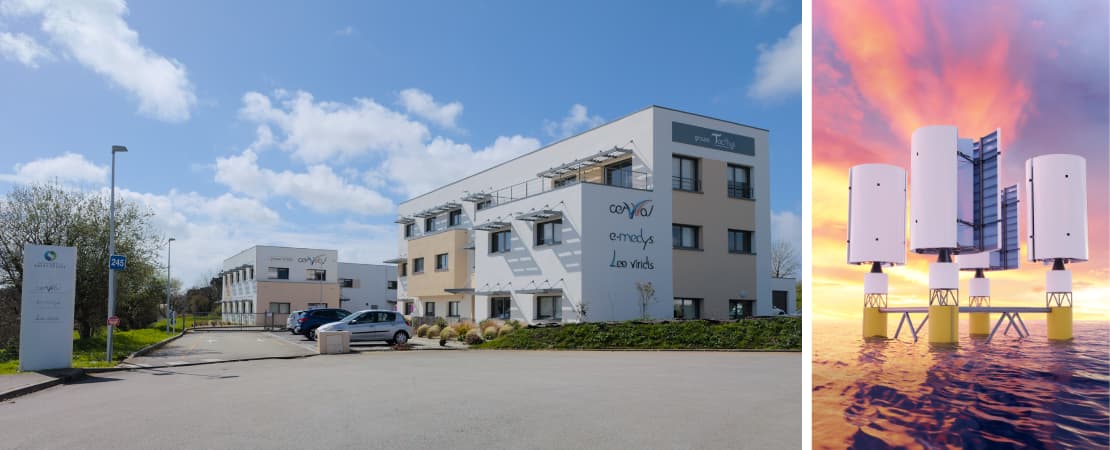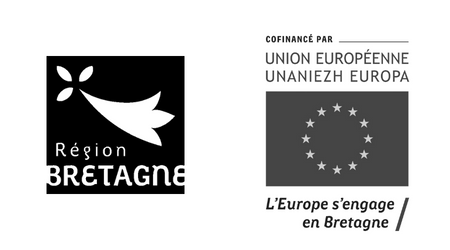Cervval will be exhibiting its solutions with Bretagne Ocean Power at FOWT. The Brest-based company, located close to the Technopôle Brest-Iroise, will be showcasing its digital twin solutions applied to offshore renewable energy. We got in the loop with Cervval CEO Pierre-Antoine Béal.
Can you give us the rundown on Cervval?
Cervval is a spin-off from the European Center for Virtual Reality and was founded in 2003. This centre originally hosted researchers from different laboratories, such as Lab-STICC and ENIB (École nationale d’ingénieurs de Brest), and is specialised in virtual reality, with a particular focus on making simulation engines interactive and usable in real time.
Cervval develops interactive techniques for the industrial sector to simulate complex phenomena, involving a wide variety of physical (mechanical, thermodynamic, etc.) and engineering disciplines.
Offshore renewable energies, whether wave or wind power, feature among the fields of application of engines and system that call on a variety of branches of physics. This ranges from oceanography to mechanics to control systems, and more.
Cervval went on to set up the Tacthys group which handles initiatives beyond the scope of digital and IT aspects. We have a team of around fifty employees.
What does your work in the field of offshore energy entail?
These areas fit well with the techniques we develop. Quite early on in Cervval’s life cycle, we started to focus on digital twins of offshore renewable structures. We developed two such twins, one for a wave energy converter dubbed Bilboquet and the other for WindHouse, a floating wind project.
For the first project, our digital twin simulates the entire system, its interactions and its electricity production.
WindHouse is a project led by Tacthys that aims to develop a vertical-axis wind turbine that is more compact than conventional wind turbines.
We collect data in real time for predictive analysis. We are involved during the pre-project phase to optimise the design and installation of these wind turbine systems. In terms of design aspects, we work on the generator control system, the float dynamics and the moorings.
On the operational side, our digital tools are designed to harness maximum power and to conduct site studies to assess energy capacities, for instance.
Could Cervval work on an entire wind project?
With our digital twin, we are able to work on the design of wind energy systems, but we could in fact extend this to encompass the installation phase. We have always applied a global approach and take into account the installation constraints for offshore wind turbines. This is one of the major challenges facing wind projects, particularly in the case of three-blade turbines. We believe that introducing these constraints at as early a stage as possible is the best solution in order to implement a pragmatic approach to developing offshore projects and meet the government’s deployment ambitions.
Do you have ambitions to get involved in European programmes?
Cervval led a European project called SubSEE4D, financed by the Brittany Region and the ERDF fund, together with project partners IMT Atlantique and France Energies Marines. The aim was to develop a 4D (3D + time) monitoring solution for submerged structures. The project was approved by the clusters Pôle Mer Méditerranée and Pôle Images et Réseaux.
The progress of the WindHouse project was curbed during the Covid pandemic. We are interested in reviving it, perhaps at European level, perhaps not, it’s not yet been defined. We are however seeking grants to support us in achieving our full-scale prototype. We have already carried out wind tunnel tests which gave encouraging results. However, we now need a full-scale pilot to test in wind conditions.
Cervval is based in Plouzané, not far from the Technopôle Brest-Iroise. Is being based in Brittany an asset for developing offshore energy projects?
We are close to the Technopôle, as well as to France Energies Marines and the Campus mondial de la mer. There is strong local engagement in offshore renewable technologies, fostering skill sharing and collaboration. The offshore renewable sector is a multidisciplinary ecosystem that brings together naval engineers, mechanics, electrical technicians, oceanographers, as well as impact study specialists, particularly in the field of noise, with our neighbours at Quiet Oceans. Brittany appears to have a strong track record of collaborative working. In the field of offshore renewables, I think that locally we have successfully got on board with working together to achieve the best possible results.
What does it mean to you as a company to be exhibiting with Bretagne Ocean Power at FOWT?
First and foremost, it’s about showing that we are part of Brittany’s ecosystem around offshore renewables, and offshore wind in particular, it’s a kind of mark of belonging. It also helps to boost our visibility during this major event.

